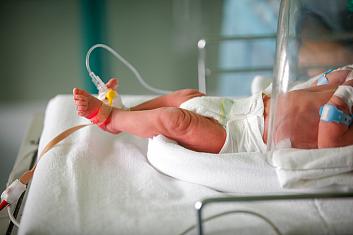Bacterial contamination of objects and instruments in the intensive care unit (ICU) is an important source of nosocomial infections. This study by Bhatta, et al. (2021) sought to determine the level of bacterial contamination of instruments and objects which are commonly touched by healthcare workers and frequently come in contact with the neonates.
This hospital based prospective study was conducted in neonatal intensive care unit (NICU) of Manipal Teaching Hospital, Pokhara, Nepal. A total of 146 samples collected from surfaces of incubators, radiant warmers, suction tips, ventilators, stethoscopes, door handles, weighing machines, mothers’ beds, phototherapy beds, laryngoscope, telephone sets, blood pressure machine, etc. formed the material of the study. Isolation, identification and antibiotic susceptibility of the bacterial isolates was performed by standard techniques. Blood culture isolates from NICU patients during the study period were compared with the environmental isolates.
Out of 146 samples, bacterial growth was observed in 109. A total of 119 bacterial isolates were retrieved from 109 samples. Three common potential pathogens isolated were Escherichia coli (n = 27), Klebsiella species (n = 21) and Staphylococcus aureus (n = 18). Majority of E. coli and Klebsiella isolates were from incubators, suction tips and mothers’ beds. Majority of S. aureus isolates were cultured from radiant warmers. Among S. aureus isolates, 33.3% (6/18) were methicillin resistant. Majority of the bacterial isolates were susceptible to gentamicin and amikacin. Common potential pathogens isolated from blood culture of NICU patients were S. aureus and Klebsiella species.
The researchers conclude that a high degree of bacterial contamination of objects/instruments in NICU was recorded and add that isolation of potential pathogens like E. coli, Klebsiella species and S. aureus is a major threat of nosocomial infections. Blood culture data of NICU reflects possibility of nosocomial infections from contaminated sites. Gentamicin and amikacin may be used for empirical therapy in suspected cases of nosocomial infections in NICU.
Reference: Bhatta DR, et al. Bacterial contamination of neonatal intensive care units: How safe are the neonates?
Antimicrobial Resistance & Infection Control. Vol. 10, No. 26. 2021.

Be the first to comment on "Bacterial Contamination of NICUs"